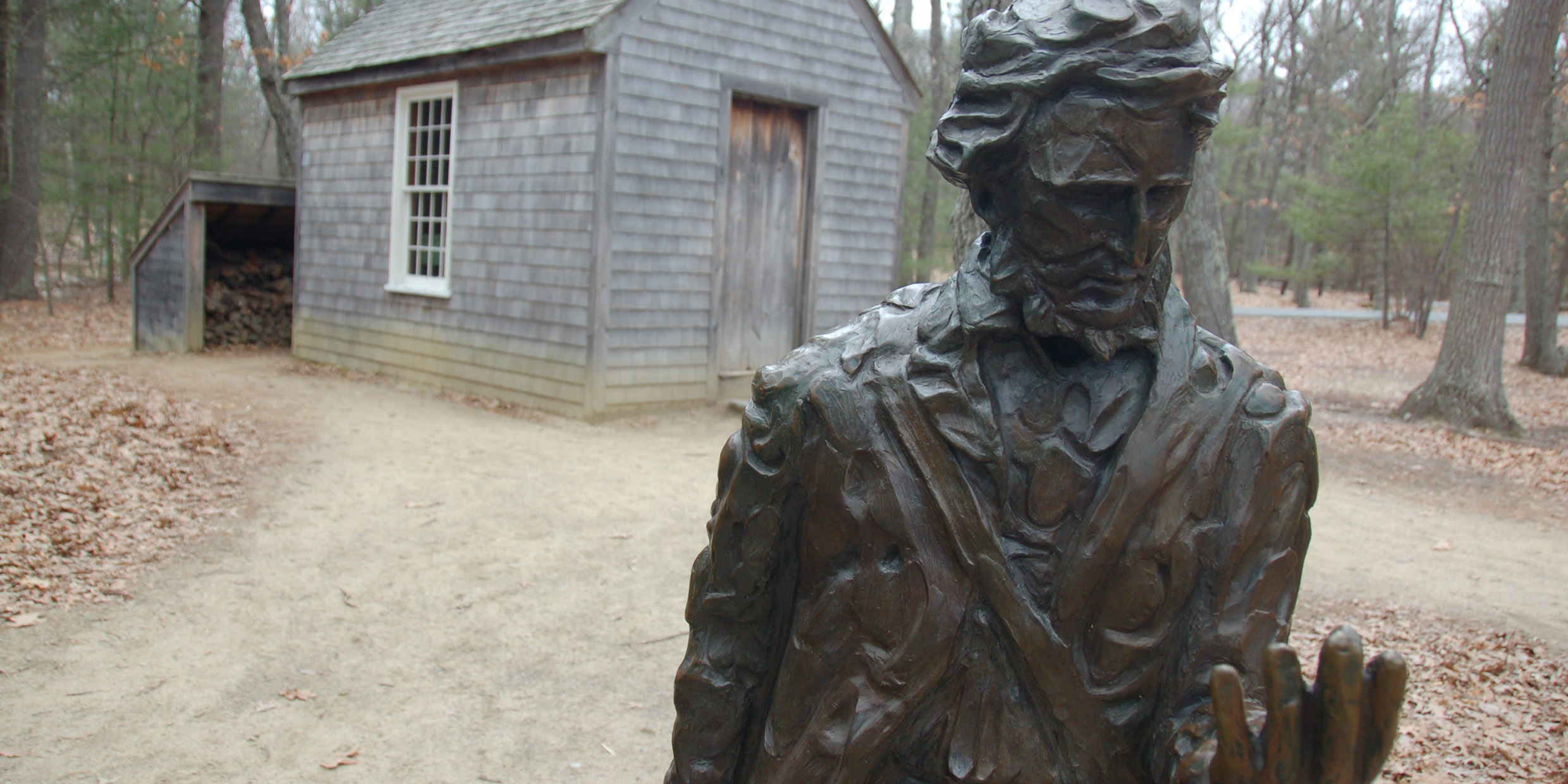Originally published 17 May 1999
In recent years we have seen a spate of books on Henry David Thoreau — his writings, his life, and the landscape in which he lived. The best of the lot is David Foster’s Thoreau’s Country: Journey Through a Transformed Landscape (Harvard 1999).
Foster is Director of the Harvard Forest in Petersham, Massachusetts and teaches ecology at Harvard University. He is a clear-eyed interpreter of the so-called hermit of Concord — no rose-colored glasses, no sentimental gush.
He begins with the landscape of Thoreau’s New England, which he knows as a historical ecologist. He then turns to the sprawling and candid observations of Thoreau’s journals. Only occasionally does he dip into Walden—the book, not the pond — that self-serving distillation of the rhetorical Thoreau.
Most of us would take the opposite tack. We would begin with Walden, and imagine the landscape Thoreau wants us to see — a wilderness despoiled by human hand. We take Thoreau at his word when he says he dines happily on woodchuck, or that he would rather sit on a pumpkin than a velvet cushion. “In wildness is the preservation of the world,” he wrote, and we emblazon his words on T‑shirts and posters, and imagine Thoreau in a cabin deep in a primeval forest, his solitude disturbed only by the cry of a loon and the hoot of an owl.
The real Thoreau was a much more interesting fellow, much more conflicted, and much more enmeshed in a thoroughly tamed landscape. Only in the context of his tamed landscape can we understand him.
Foster describes three landscapes of New England.
The first is a forest broken only by occasional Native American villages and threaded by foot paths. This is the landscape encountered by the first European settlers. To their eyes the forest may have seemed primeval, but in fact it was already greatly modified by human culture. The continent had been inhabited for 10,000 years by the time the Pilgrims set foot on Plymouth Rock.
During Thoreau’s lifetime, in the mid 1800s, southern New England was more intensely cultivated than at any time before or since. Two-thirds of the land was open fields and pasture, interspersed with small woodlots and crisscrossed by roads. From his favorite vantage points on Conantum Cliff or Fair Haven Hill, Thoreau looked out on a tidy patchwork of agricultural plots that stretched as far as the eye could see.
But change was in the air. With the Industrial Revolution and the building of railroads and canals, people abandoned the rural life and moved to emerging industrial cities — Lowell, Pawtucket, and the rest. Those who stayed with farming took off for more fertile land to the west, now bound to Eastern markets by canals and rail.
As the farmers departed, much of New England reverted to forest. There are more woodlands and wild places in New England today than in Thoreau’s time.
It is Thoreau’s mid-19th-century landscape that Foster sketches with particular care, supplemented by generous selections from Thoreau’s journal. For all of Thoreau’s lamentations about lost wildness, it is clear that he was greatly attracted to the cultivated countryside and found much beauty in it.
On returning from the Maine woods, Thoreau wrote: “It was a relief to get back to our smooth, but still varied landscape. For a permanent residence, it seemed to me that there could be no comparison between this [Concord] and the wilderness. The wilderness is simple, almost to barrenness. The partially cultivated country it is which chiefly has inspired, and will continue to inspire, the strains of poets.”
With the help of charming illustrations by Abigal Rorer, Foster takes us on a tour of that “partially cultivated country” — the pastures, the woodlots, the hay meadows, the streams, the flora and fauna. It is a world of immense and humane charm; it is also different in almost every respect from the landscape it replaced, and the landscape that would follow.
Foster writes: “Despite the cleared forests, the dwindling animal populations, the dammed and polluted rivers, and the declining numbers of waterfowl and fish, Thoreau was able to find wildness in a thousand scenes, each one shaped by human activity…And, of course, he could turn Walden, a cut-over and ‘tamed’ woodlot, whose shores had recently been desecrated by one thousand workers building the railroad to Fitchburg, into a symbol of solitude, natural values, and wilderness.”
This apparent contradiction leaves us with two ideas to ponder, says Foster. The first, is that wilderness can be found within oneself. The second is that we inevitably live in a culturally conditioned landscape that can be appreciated for both its natural qualities and the human story it contains.
What we can learn from Thoreau is not a nostalgic longing for the forest primeval, but how to love the “tamed” landscape we have inherited, how to cultivate its civilizing qualities, and how to live within it in ways that are spiritually and morally awake.
We are now faced with a fourth New England landscape — of strip malls, sprawling housing developments, and endless industrial “parks.” It is more important than ever that we turn our hand to the preservation and creation of biologically diverse natural habitats that nurture the best of the human spirit.
Foster’s fine book lays the groundwork for a conservation ethic that is realistic, practical, and — as it must be — sympathetic to human culture and informed by human history.



